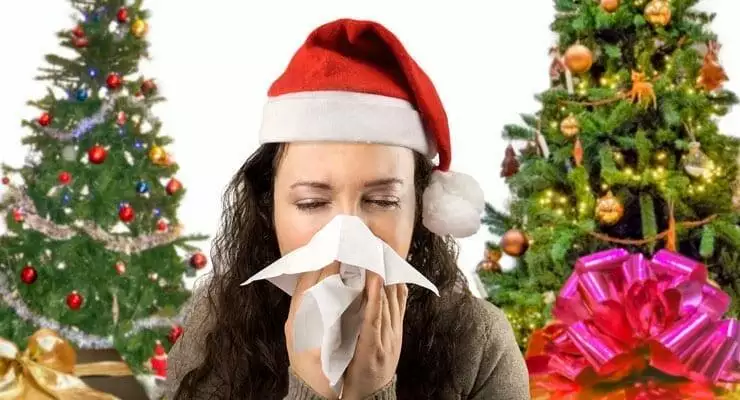To many families, the holiday season is not complete without a decorated tree twinkling in the window. Each year, U.S. tree farmers sell an estimated 25 to 30 million pine and fir trees, according to the National Christmas Tree Association. For people with Christmas tree allergies, this abundance of pine and fir needles can make allergy symptoms difficult to control during holiday festivities.
History
The first known report of Christmas tree allergies is a paper on asthma and its connection to a Christmas tree dating from 1929. The paper details a situation in which three asthmatic patients under observation by a Dr. Cobe experienced an increase in symptoms after the introduction of a Christmas tree and ornaments.
Significance
Doctors do not have an exact statistic for the number of people who suffer from Christmas tree allergies because individuals often choose home treatment options over a doctor’s visit. A Swedish study that tested participants for pine balsam allergies reported a 5 percent positive reaction. In a 1969 clinical study conducted by Drs. David Malloch and Derek M. Wyse, 7 percent of 1,657 participants showed positive reactions to Christmas tree allergies. In that study, 48.7 percent of participants decorated a Scotch pine tree.
Types
The American Academy of Allergy, Asthma & Immunology lists pine as one of the prime sources for outdoor allergens. Pine produces a high amount of pollen during the spring, triggering allergies. While pollen production slows in the winter, pine tree needles and tree sap often collect pollen. Other allergens that may cause Christmas tree allergies include mold, fertilizer, tree sap and pet dander.
Symptoms
Christmas tree allergies trigger similar reactions as other allergies. You or your child may develop a runny nose, watery eyes or a persistent cough. Congestion is common, as is redness around the eyes. Parts of the body, including the skin, mouth, and eyes, may itch. People with a tree sap allergy may develop a red rash if the sap touches their skin.
Misconceptions
An artificial tree can prevent some Christmastime allergies, but still collects some common household allergens. It lacks allergy risks related to pollen and tree sap, but can still trigger allergies caused by mold and pet dander, according to Dr. Jeffrey Adelglass, from the Allergy Testing and Treatment Center.
Prevention/Treatment
If you hate Christmas tree allergies, but don’t want to give up your holiday tradition, you have several choices. First, clean your tree before bringing it inside. For real trees, wash pollen and other allergens off with a garden hose. Put the tree trunk in a bucket of water and allow the tree to dry. For artificial trees, wipe down the branches and package the tree in an airtight container before you store it each year. Wear gloves and a long-sleeved shirt anytime you work with a real tree to prevent the sap from causing an allergic reaction.





